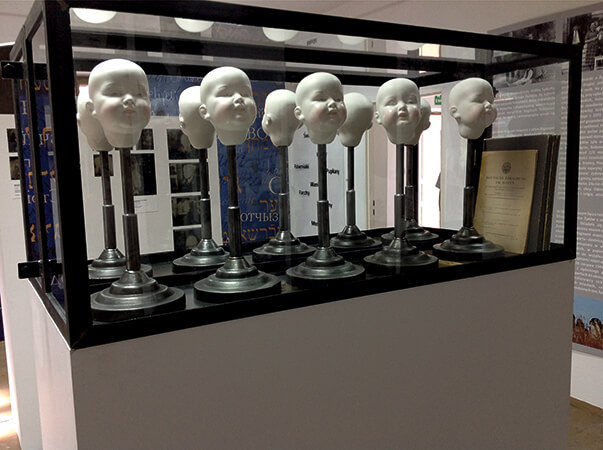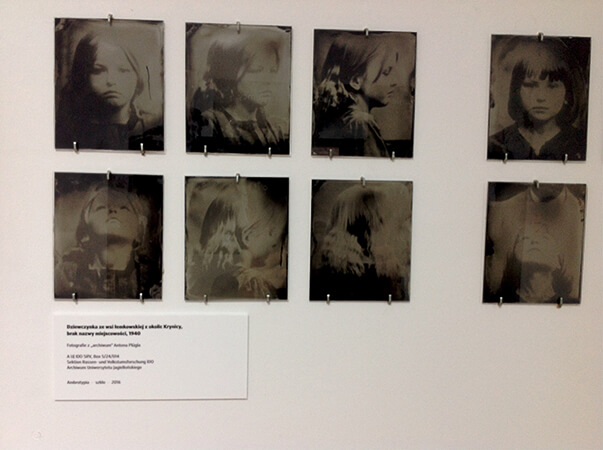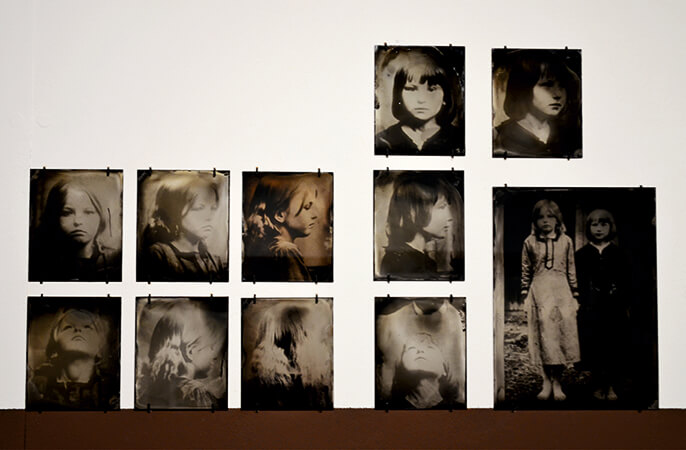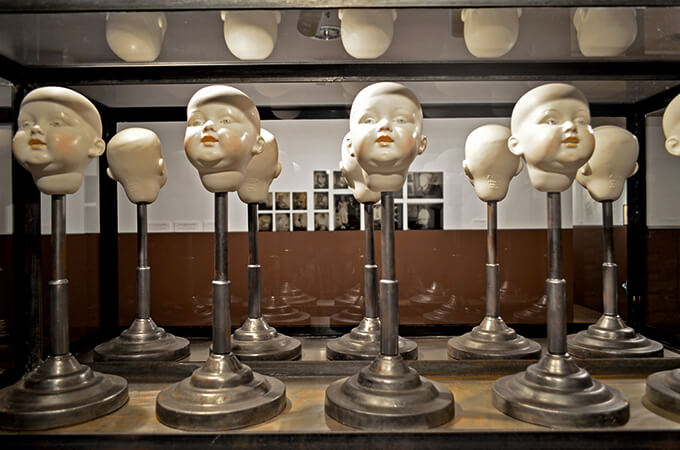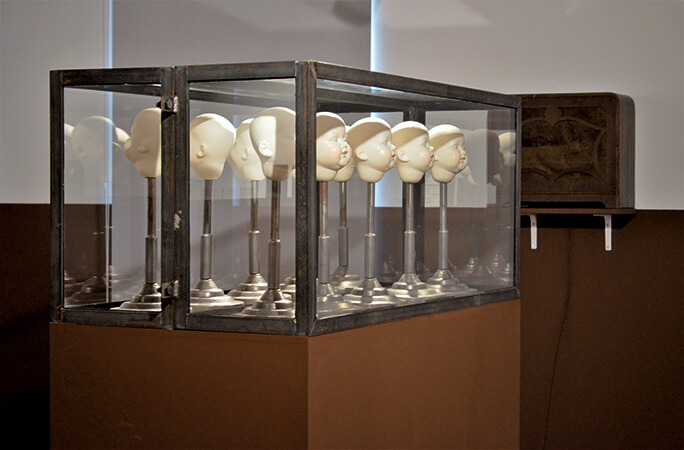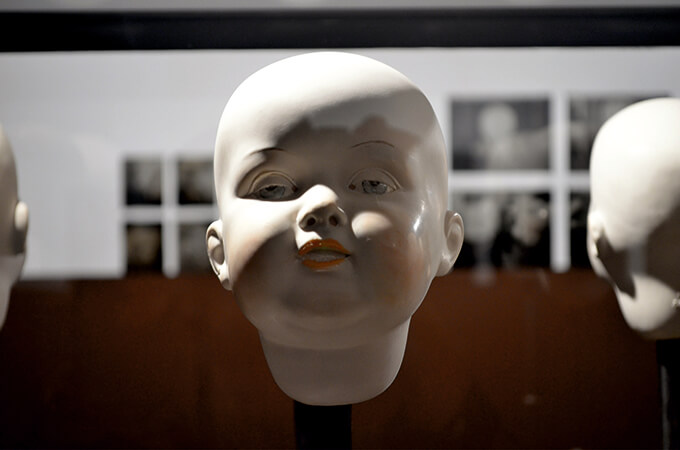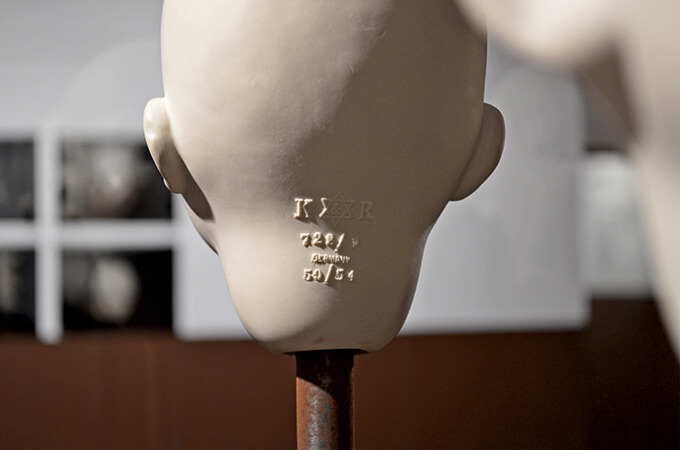Collection Institut für Deutsche Ostarbeit
| title: |
Collection Institut für Deutsche Ostarbeit |
| year: | 2016 |
| dimensions: | 220/120/120 cm |
| technique: | installation with sound, steel, glass, cast iron, acrylic, pigment, ambrotype, German original speaker, sound: compilation of Hans Frank's speech from the inauguration of the Institut für Deutsche Ostarbeit in 1940 in Krakow, time: 7 min. |
| cooperation: | Dariusz Sitek, Aleksandra Wolter Institute of Ethnology and Cultural Anthropology of the Jagiellonian University Archive of the Jagiellonian University in Krakow |
| description: | In the latest artistic projects, Dorota Nieznalska deals with the difficult history of Polish-German relations, for which the period of the Second World War and the post-war forced mass resettlement of the population: Germans from Warmia and Mazury, Pomerania and Silesia and Polish, from central and incorporated areas after the war, the composition of the pre-war territories of the eastern provinces in the USSR Regained Territories. Dialectics of memory and oblivion of traumatically marked places that appear in the artist's work, has autobiographical features; Nieznalska's grandparents, who were Bojko, came from Rudenka under Lesko, forcibly displaced to the recovered territories of former East Prussia in 1947 as part of the Wisla Aktion. The installation presented in the interior of the reconstructed buildings of the German colonists from Gołkowice Dolne was created especially for this space. The work consists of three parts: photographed by the artist ethnographic and anthropological photographs from a collection of several tens of thousands of photographs collected and made during World War II by photographic sections founded by the Nazis in 1940 in Krakow Institut für Deutsche Ostarbeit (IDO) [Institute of German Eastern Labor], casts of puppet heads and recordings of the speech of the general Governor Hans Frank inaugurating the IDO.
Nieznalska's work is a reflection on the use of the methods of anthropology and ethnography, as well as art history by national socialism and shows the entanglement of science in totalitarianism, as well as the ambiguous status of neutral and innocent at first glance, touristic and ethnographic photographs. Photos depicting the population of southern Małopolska, its landscape and rural and small-town architecture do not differ much from traditional photographic documentation of an ethnographic or sightseeing nature. Researchers even stress that some of the photographs included in the collection came from Polish pre-war sources. The Institute had a Frank's intention to be transformed into a German university in Krakow. The photographs should show the natural values of the General Government, the cultural backwardness of the conquered Poland, as well as the proof of the eternal German presence in the East translated as a German „civilizing mission”. To achieve that Germans didn`t hesitate to use the history of the Nowy Sącz region, including the episode of the so-called Josephine colonization. The reconstruction of the house from Gołkowice Dolne, where the work of Dorota Nieznalska is shown, also reminds us of the fate of the population polonised in the course of nearly two hundred years in Sądecczyzna, who came here in the 18th century. / Wojciech Szymański / |
© Dorota Nieznalska 2009-2023 | privacy policy
website implementation: Brandrei.com
